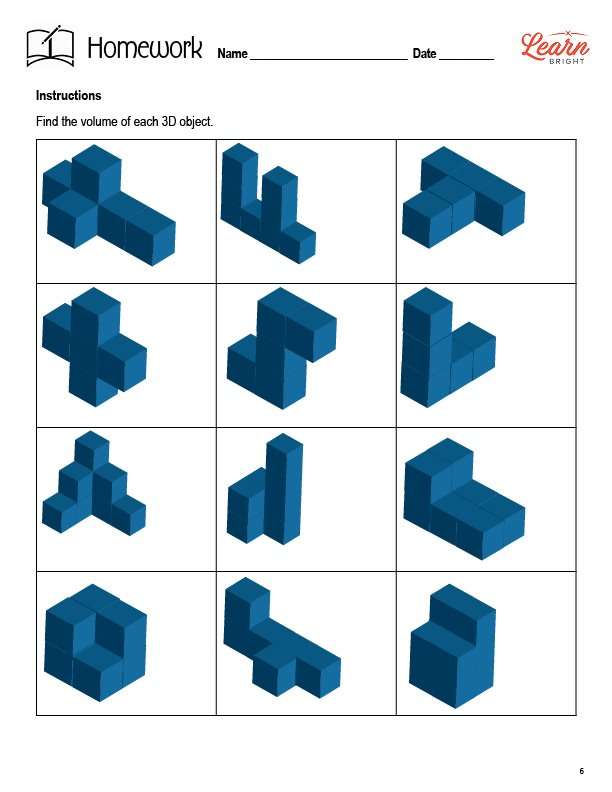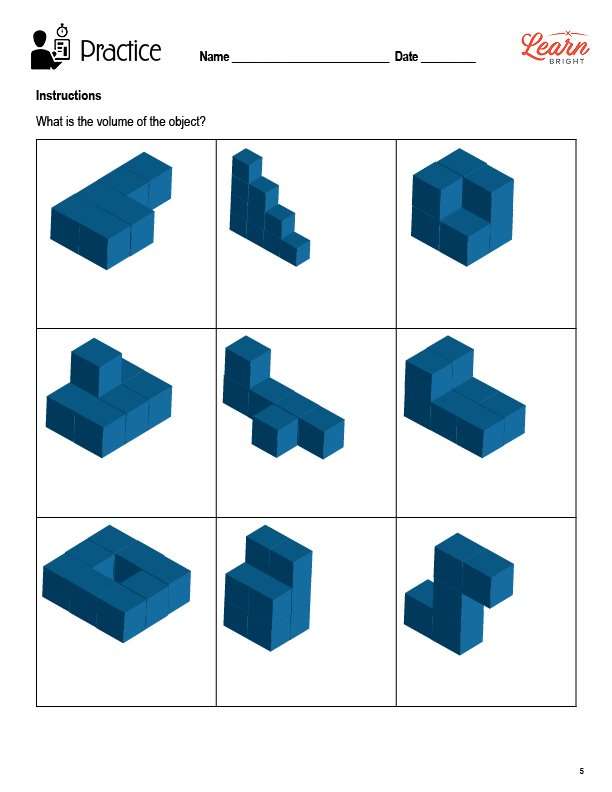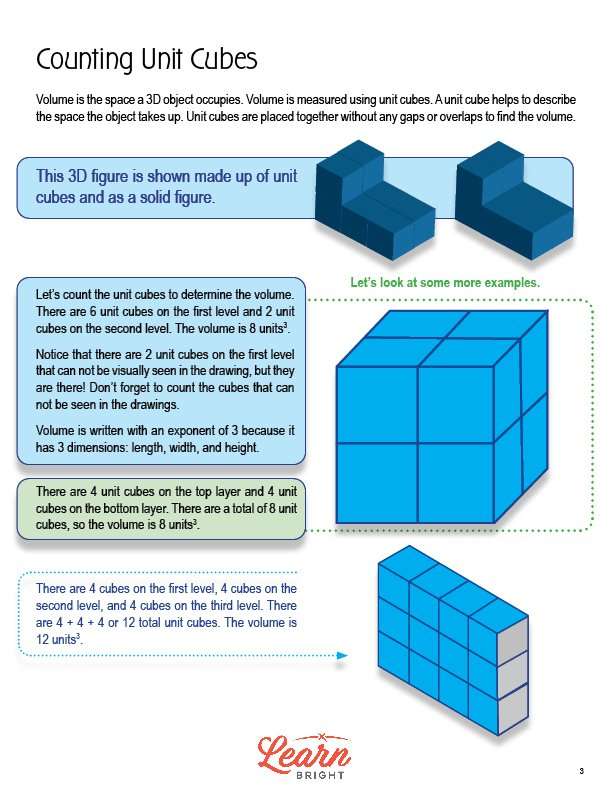Description
What our Counting Unit Cubes lesson plan includes
Lesson Objectives and Overview: Counting Unit Cubes teaches students how to measure volume with unit cubes. Students will look at images of shapes made up of unit cubes and determine the volume of the shapes, demonstrating their understanding of the lesson material. This lesson is for students in 5th grade.
Classroom Procedure
Every lesson plan provides you with a classroom procedure page that outlines a step-by-step guide to follow. You do not have to follow the guide exactly. The guide helps you organize the lesson and details when to hand out worksheets. It also lists information in the blue box that you might find useful. You will find the lesson objectives, state standards, and number of class sessions the lesson should take to complete in this area. In addition, it describes the supplies you will need as well as what and how you need to prepare beforehand.
Options for Lesson
Included with this lesson is an “Options for Lesson” section that lists a number of suggestions for activities to add to the lesson or substitutions for the ones already in the lesson. One of the optional additions to this lesson is to have your students build 3D figures and then solve the number of unit cubes used as a class. Your students can also color in the unit cubes on a page to find the correct number. Finally, to expand the lesson, you can use this lesson in conjunction with other lessons on volume.
Teacher Notes
The teacher notes page includes a paragraph with additional guidelines and things to think about as you begin to plan your lesson. This page also includes lines that you can use to add your own notes as you’re preparing for this lesson.
COUNTING UNIT CUBES LESSON PLAN CONTENT PAGES
Counting Unit Cubes
The Counting Unit Cubes lesson plan includes one page of content. When we talk about volume, we mean the space that a 3D object occupies. We measure volume in unit cubes. These help us describe the space that an object takes up. To find volume, we place unit cubes together without gaps or overlaps. To illustrate this, the lesson shows some 3D figures made up of unit cubes and as solid figures.
Next, the lesson walks through some examples of how to count unit cubes to find volume. The first example shows six unit cubes on the first level and two unit cubes on the second level. Therefore, the volume is 8 units3. It’s important to note that, when looking at the drawing, we can’t see two of unit cubes on the first level, but we know that they are there. It’s important to remember to include the cubes that we can’t see in the drawing. We write volume with a 3 exponent (3) because it’s three-dimensional: length, width, and height.
The lesson closes with another example. This shape has four cubes on the first, second, and third levels. We can add them up: 4 + 4 + 4 = 12 unit cubes. Therefore, the total volume is 12 units3.
COUNTING UNIT CUBES LESSON PLAN WORKSHEETS
The Counting Unit Cubes lesson plan includes three worksheets: an activity worksheet, a practice worksheet, and a homework assignment. You can refer to the guide on the classroom procedure page to determine when to hand out each worksheet.
SKETCHING FIGURES ACTIVITY WORKSHEET
The activity worksheet asks students to use unit cubes and their teacher’s instructions to sketch different figures based on their volumes.
FIND THE VOLUME PRACTICE WORKSHEET
For the practice worksheet, students will look at different objects and find their volumes.
COUNTING UNIT CUBES HOMEWORK ASSIGNMENT
Like the practice worksheet, for the homework assignment, students will look at different objects and find their volumes.
Worksheet Answer Keys
This lesson plan includes answer keys for the practice worksheet and the homework assignment. If you choose to administer the lesson pages to your students via PDF, you will need to save a new file that omits these pages. Otherwise, you can simply print out the applicable pages and keep these as reference for yourself when grading assignments.









